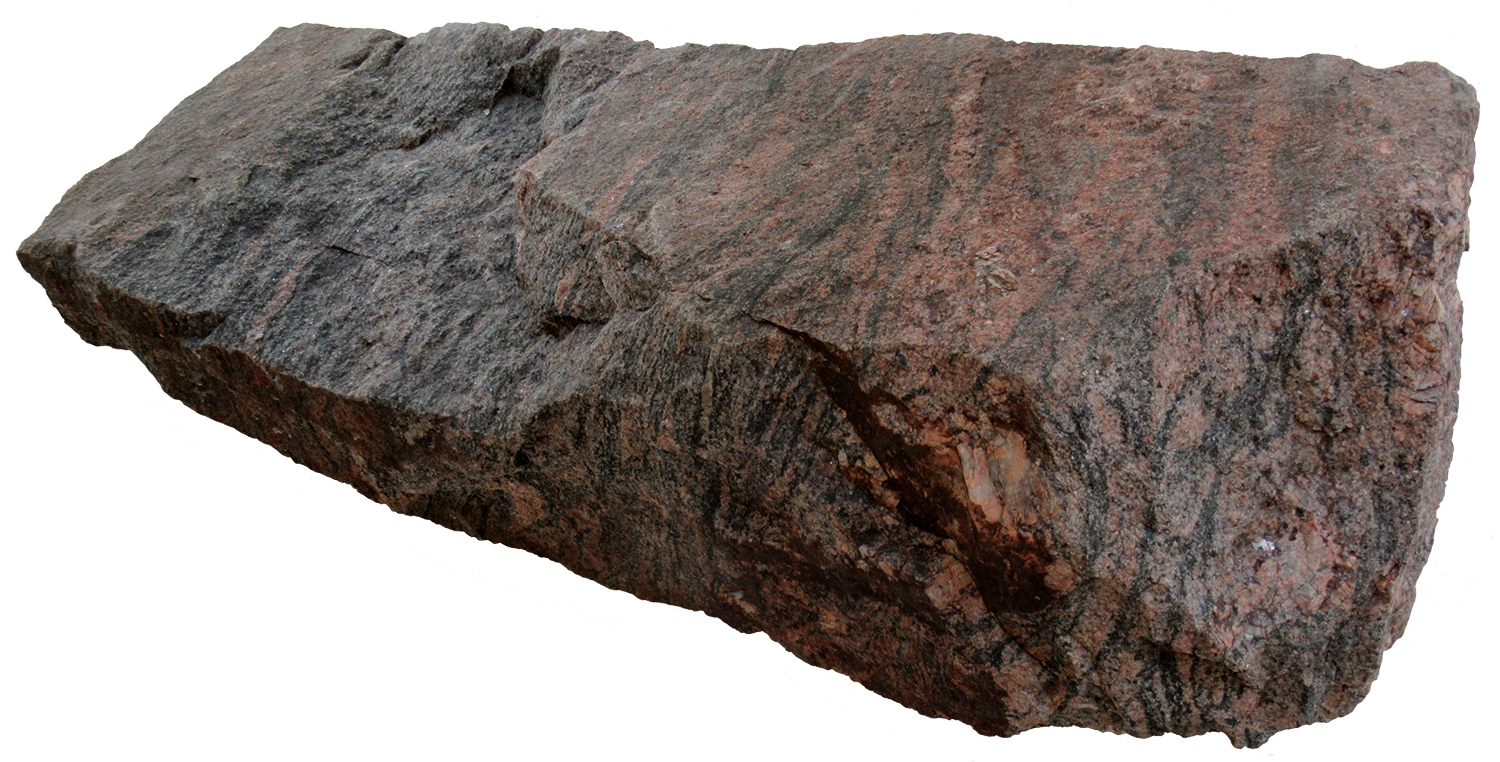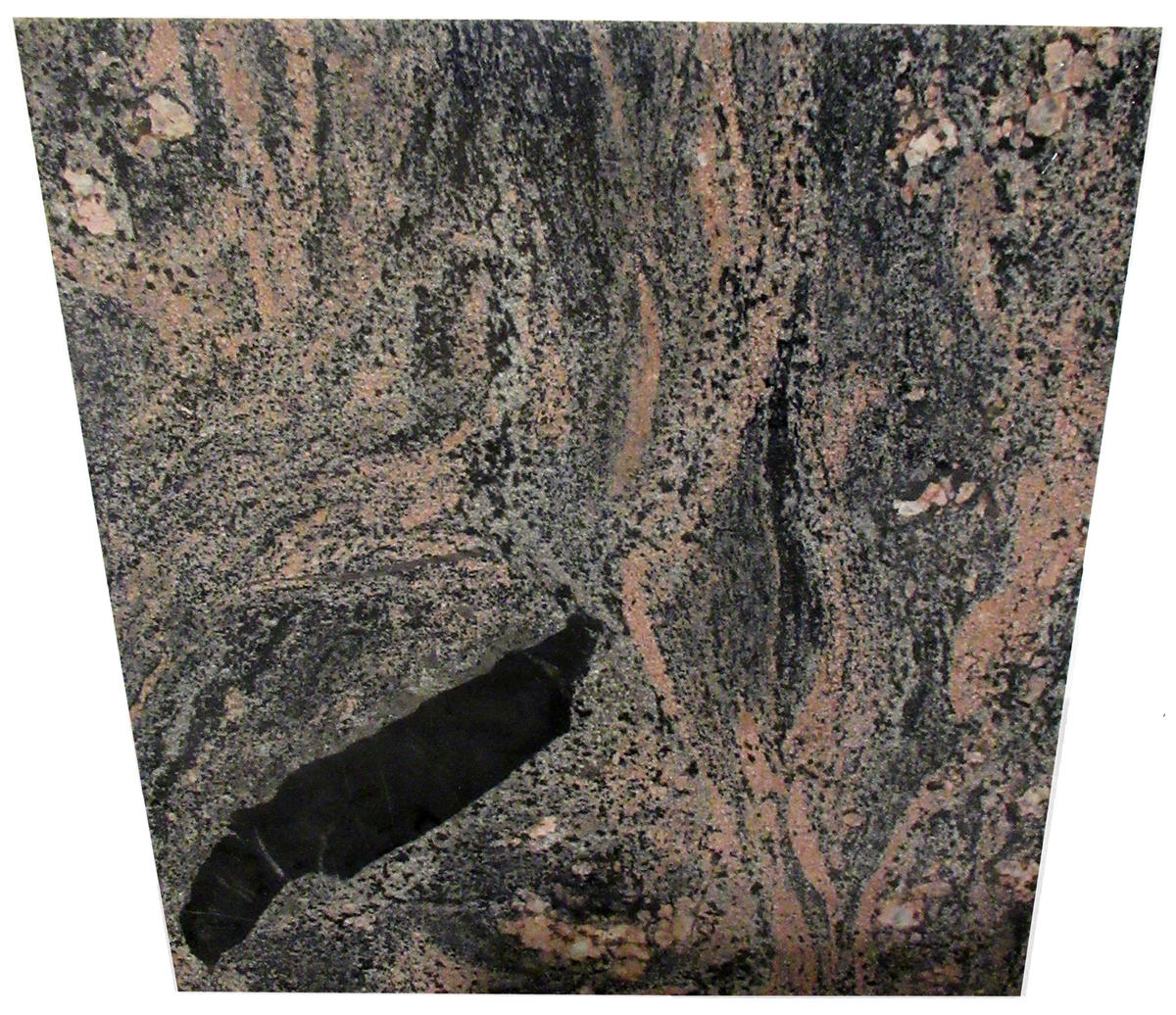
Morton gneiss is one of the oldest rock units on Earth, having initially formed over 3.5 billion years ago. This gneiss (the term is pronounced ‘nice’ which has led to innumerable geology puns) began as a granite intrusive that cooled kilometers below the Earth’s surface. For many decades, it was thought to be the oldest known terrestrial rock, with only meteorites being more ancient. However, the honor of oldest terrestrial rocks currently belongs to the Nuvvuagittuq greenstone belt along the east coast of Canada’s Hudson Bay. Yet the Morton Gneiss and nearby Montevideo Gneiss are still remarkably old, some of the first continental crust materials that would eventually converge to become the craton, or core, of North America.
The gray granite that originally formed the rock was a mosaic of large crystals without the present rock’s distinctive layering or color banding. That banding did not form until nearly 900 million years later when the original granite was caught up in the convergence of two or more microcontinents. This tectonic collision resulted in tremendous heat and pressure that caused partial melting of the granite at the same time another intrusion occurred of molten pink granite. The two granites metamorphosed, with their minerals segregating into light and dark bands, that were then folded and twisted by tectonic forces into the patterns seen today. Roughly 800 million years later, another less dramatic tectonic event resulted in additional low-grade metamorphism of the rock with some emplacement of igneous rocks.
About 100 million years ago, the Morton gneiss was slowly uplifted to be exposed at the Earth's surface. However, its present exposures are largely due to more recent glacial activity. Roughly 2.5 million years ago, Arctic ice sheets began to form, episodically expanding and shrinking to alter northern landscapes. These ice sheets left behind thick till deposits that covered the Morton Gneiss. Then, as the last ice sheet began rapidly melting about 12,000 years ago, meltwater in western Minnesota pooled up in front of the melting ice sheet because ice still blocked the northern drainage. An immense glacial lake formed in front of the melting ice sheet that eventually rose to find an outlet south. The near-catastrophic drainage of this immense glacial lake produced a huge glacial river, known as the Glacial River Warren, that carved out the present valley that hosts the Minnesota River. It was this massive glacial lake outburst that washed away the glacial till to reveal the present Morton Gneiss outcrops. Hence the Morton Gneiss reflects aspects of the Earth’s evolution from its earliest formation of continental crust, through the growth of large continents, to the recent melting of vast ice sheets.
When cut and polished, the color banding of Morton gneiss makes it a valuable facing stone for buildings. It was particularly popular during the 1920s to 1930s Art Deco movement, but is still used in many Minnesota structures, including the paving stones of the small courtyard between neighboring Vincent and Murphy Halls.
